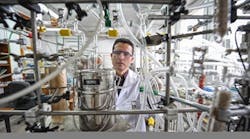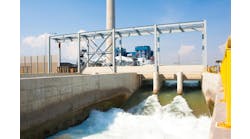A titanium dioxide photocatalyst cleans up wastewater and produces high value organic chemicals at good selectivity, report researchers at the Institute of Physical Chemistry (IPC) of the Polish Academy of Sciences, Warsaw. The heterogeneous catalyst provides about 70% selectivity in transforming glucose in biomass in the water into carboxylic acids (glucaric and gluconic acid) and arabitol, which all serve as industrial feedstocks.
The conversion takes place at room temperature and atmospheric pressure using air, and requires only a short reaction time (e.g., 5 minutes), note the researchers. Another advantage is that titanium dioxide is cheap and nontoxic, they add. More details appear in a recent article in Bioresource Technology.
The catalyst is prepared via an ultrasound-modified sol-gel method. "One important thing to highlight here is that the method of photocatalysts' preparation is relatively cheap," says Juan Carlos Colmanares, one of the IPC researchers.
The catalyst may be reusable many times, he notes. "In our lab we reused five times our best photocatalysts and we observed approximately 3–5% difference in activity/selectivity between the first and fifth cycle…" However, he adds, "… the presence of heteroatoms (e.g., Cl) in the biomass could be detrimental to our catalysts."
Pilot-scale testing probably will start during the summer of 2013 at the University of Cordoba, Spain, "just because we want to use a solar photoreactor and summer time is the best," says Colmanares. In the meantime, the researchers are continuing to work on optimizing the catalyst.
Some significant challenges remain, he admits. Making best use of solar light requires redesigning the photoreactor. In addition, controlling selectivity with a very hetergeneous biomass substrate might be difficult.
"In general, the technology is very promising but requires a lot of research… because of the complexity of the process from the side of materials science/engineering and also from the photoreactors' engineering. Our research group… is open to collaborate with anyone…," Colmanares adds. If the researchers can line up sufficient funding, he thinks a commercial catalyst might become available in less than 10 years.

